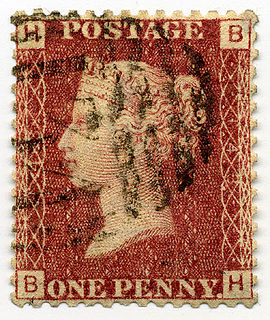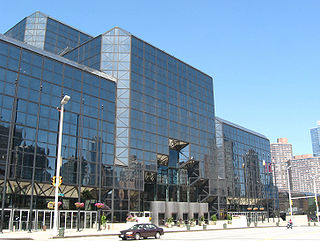
Philately is the study of stamps and postal history and other related items. It also refers to the collection, appreciation and research activities on stamps and other philatelic products. Philately involves more than just stamp collecting, which does not necessarily involve the study of stamps. It is possible to be a philatelist without owning any stamps. For instance, the stamps being studied may be very rare, or reside only in museums.

Postal history is the study of postal systems and how they operate and, or, the study of the use of postage stamps and covers and associated postal artifacts illustrating historical episodes in the development of postal systems. The term is attributed to Robson Lowe, a professional philatelist, stamp dealer and stamp auctioneer, who made the first organised study of the subject in the 1930s and described philatelists as "students of science", but postal historians as "students of humanity". More precisely, philatelists describe postal history as the study of rates, routes, markings, and means.

Airmail is a mail transport service branded and sold on the basis of at least one leg of its journey being by air. Airmail items typically arrive more quickly than surface mail, and usually cost more to send. Airmail may be the only option for sending mail to some destinations, such as overseas, if the mail cannot wait the time it would take to arrive by ship, sometimes weeks. The Universal Postal Union adopted comprehensive rules for airmail at its 1929 Postal Union Congress in London. Since the official language of the Universal Postal Union is French, airmail items worldwide are often marked Par avion, literally: "by airplane".

An airmail stamp is a postage stamp intended to pay either an airmail fee that is charged in addition to the surface rate, or the full airmail rate, for an item of mail to be transported by air.

Stephen Hector Taylor-Smith often known as Stephen Smith, was a pioneering Indian aerospace engineer who developed techniques in delivering mail by rocket. Unlike Friedrich Schmiedl, whom the Austrian Authorities banned from further experimenting, Smith was encouraged in his experiments by Indian Officials. In the ten-year span of his experiments (1934–1944), Smith made some 270 launches, including at least 80 rocket mail flights.

Eugene Klein of Philadelphia, Pennsylvania, was an internationally known stamp collector, stamp dealer, and auctioneer who was President of the American Philatelic Society from 1935 to 1937.

Henry M. Goodkind of New York City, was a distinguished American philatelist who specialized in the study of air mail postage stamps of the world, and published numerous articles and studies on the subject.
Philip Silver (1909–1999), of New York City, was a philatelist who specialized in the field of air mail stamps, known as aerophilately. He studied air mail stamps and postal history, and wrote extensively on the subject.
Nicolas Sanabria of New York City, was a philatelist concerned primarily with the field of aerophilately. His name is familiar to philatelists because of his Sanabria Catalog.
William Hubert Miller Jr., of New York City, was an aerophilatelist who published philatelic literature on the subject.
Dr. James J. Matejka Jr. of Chicago, Illinois, was a notable American philatelist at the local, national, and international level.
Lloyd B. Gatchell of New York City, was a philatelist who was named to the Hall of Fame of the American Philatelic Society. He was known as “Bart” to his philatelic friends and acquaintances.
Everett C. Erle, of Oakland, California, was a promoter of philately in the San Francisco Bay area.

A philatelic exhibition is an exhibition of stamps and postal history where stamp collectors (philatelists) compete for medals. The displays are shown in glass frames, and the exhibition is normally accompanied by stamp dealer bourses and post office stands where stamps and other philatelic items may be purchased.
Harry Lewis Hayman, (1850-1927) was a British philatelist who signed the Roll of Distinguished Philatelists in 1921.

World Stamp Show-NY 2016 was the United States' once-a-decade international celebration of stamp collecting. It took place at the Jacob K. Javits Convention Center in New York from May 28 to June 4, 2016. This was the first international stamp show to be held in New York since FIPEX in 1956.

In aerophilately, a branch of philately, a first flight cover, also known by the acronym FFC, is mail that has been carried on an inaugural flight of an airline, route, or aircraft, normally postmarked with the date of the flight often of the arrival destination proving it was actually carried on the aircraft and may have a special flight cachet and/or an arrival postmark. Because many first flight covers are essentially made as collectables they can be considered philatelic mail though others consider them to be postal history.











